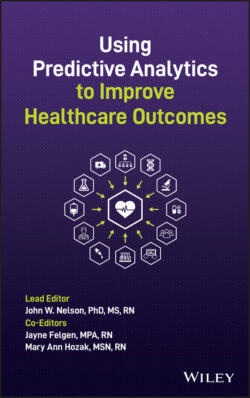Читать книгу Using Predictive Analytics to Improve Healthcare Outcomes - Группа авторов - Страница 26
Step 9: Collect Retrospective Data Right Away and Take Action
ОглавлениеIf available, use retrospective data (data used for reporting what has already happened) to determine which predictor variables, of those already being measured, most closely relate to your variable of interest. Have a mathematician, statistician, or data analyst run a correlation table of all the predictor variables. Most organizations employ or contract with mathematicians, statisticians, and/or others who know how to run and read a correlation table using statistics software such as SPSS, SAS, or R. The mathematician, statistician, or analyst will be able to identify all the predictor variables found to have a relationship with the variable of interest and rank them in order of the strength of the relationship. (Many examples of these ranked predictor variables will appear in this book.) This will help start a meaningful conversation about what is being discovered while data on the remaining variables from the measurement model is still being collected manually. If actionable information is discovered during this step, operational changes can be implemented immediately. Further examination of the data will continue, but if what you have discovered by this point makes some opportunities for improvements apparent, do not wait to improve operations!
